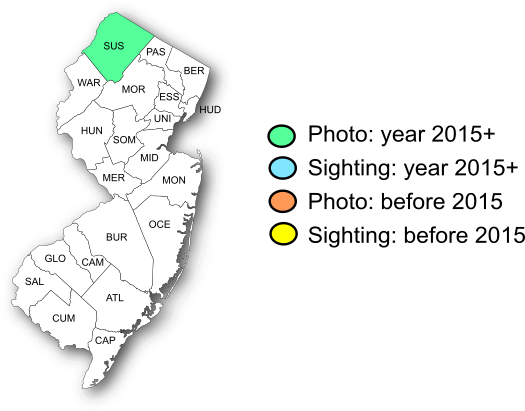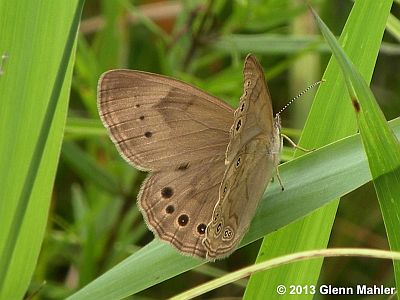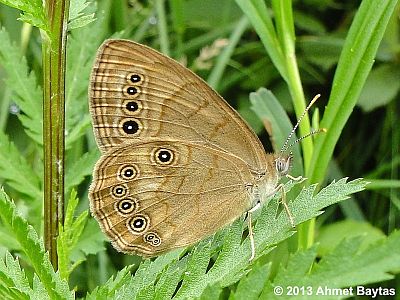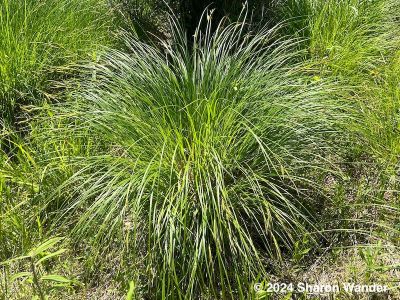New Jersey Butterfly Club
A chapter of the North American Butterfly Association (NABA)
Eyed Brown
Satyrodes eurydice
Identification: Small—1.8". Above: FW and HW pale brown, somewhat darker toward the body especially on the FW. Each wing has a row of black submarginal eyespots, larger on the HW. Below: FW and HW pale brown with narrow, jagged, dark-brown lines crossing both wings; especially note an inward-pointing notch on the HW basal line. On Appalachian Brown these lines are less irregular and the basal line lacks the notch.
NJ Status and Distribution: Classified as Special Concern in NJ. Resident. Primarily a northern species that in recent years has been reported only from the Wallkill drainage basin.

Habitat: Large, open, marshes dominated by sedges. Usually not found in wet woods, which is the preferred habitat of Appalachian Brown.
Flight Period: One brood. Early June to late July. Extreme dates: 6/2—7/31.
Caterpillar Food Plants: Sedges (Carex, Scirpus).
Overwintering Stage: Caterpillar.
Good Locations: Appalachian Trail Lands, Wallkill River NWR.
Comments: In Northwestern NJ, where both species of brown are known to occur, individuals seen in the middle of large wet meadows are probably this species. Browns seen where wet woods and meadows overlap could be either species, whereas individuals seen in wet woods are almost certainly Appalachian. Given the overlap in habitat and spatial and temporal distribution, it would not be surprising if occasional hybridization occurs resulting in some individuals displaying characteristics of both species. Since Eyed Brown is very much the rarer of the two species, photos of suspected individuals in new locations should be submitted to the Recent Sightings page of this website.


